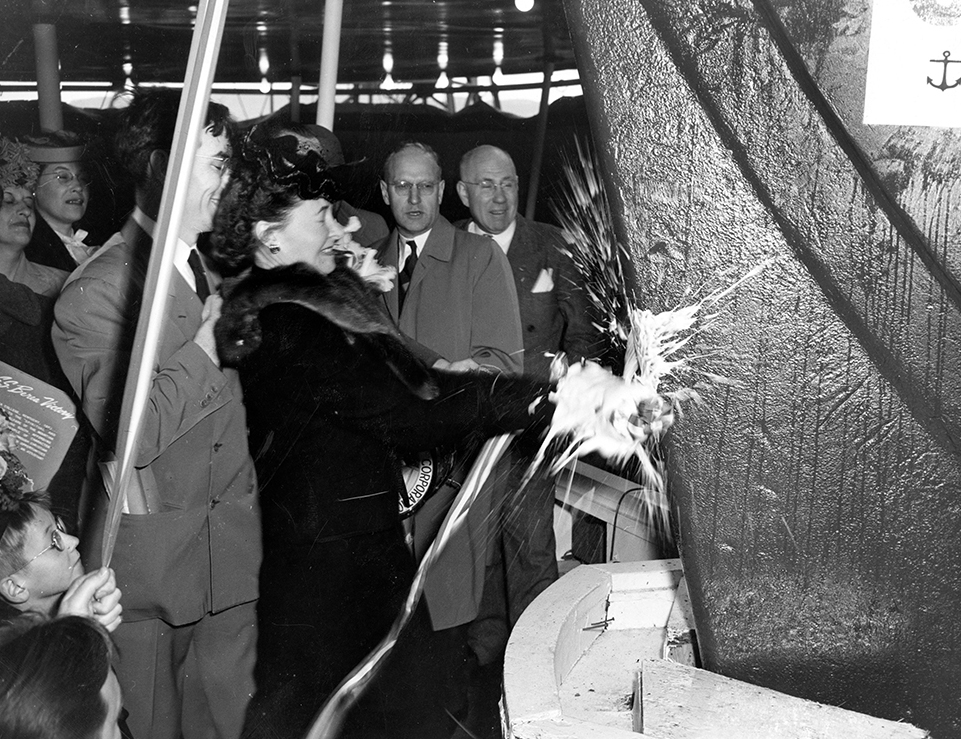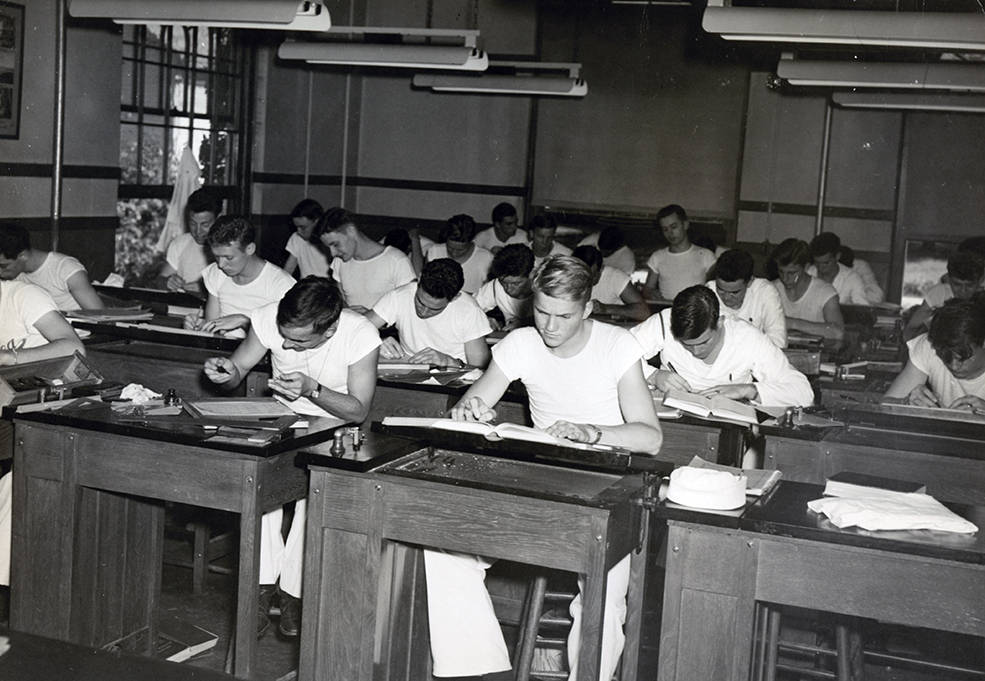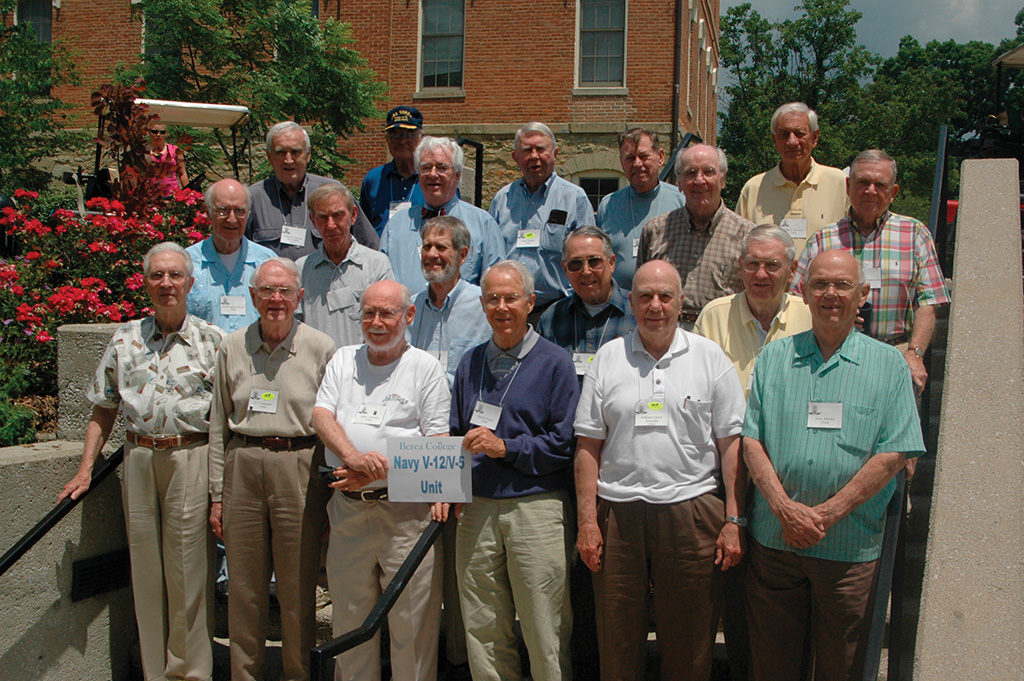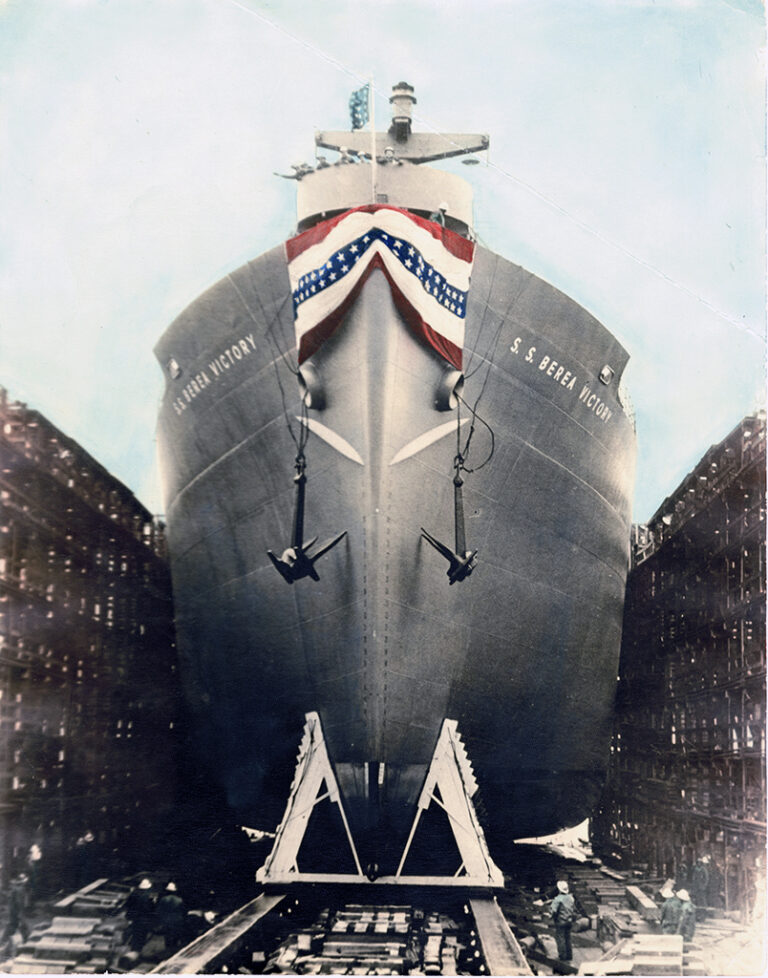The S.S. Berea Victory was one of 150 U.S. Maritime Administration cargo ships constructed during the war that were named after educational institutions. Its first mission started April 1, 1945, in the Battle for Okinawa.
Stories on how World War II impacted Berea College and its legacy
In March 1945 Berea joined World War II efforts off the coast of Richmond, Calif., delivering supplies in the Pacific—the S.S. Berea Victory, that is. The S.S. Berea Victory was one of 150 U.S. Maritime Administration cargo ships con-structed during the war named after educational institutions. The 10,600-ton ship was built in just 67 days. The Victory ships, designed to replace the earlier Liberty ships that were intended only for use during World War II, were faster, longer, wider, taller and built to last longer.

The S.S. Berea Victory crew had the dangerous assignment of delivering ammunition for the Battle of Okinawa, which lasted from April 1, 1945, until June 22, 1945. During the battle, three other Victory ships were sunk by kamikaze at-tacks, resulting in the loss of 24,000 tons of ammunition—a severe hindrance to the U.S. combat effort. The S.S. Saginaw Victory and the S.S. Berea Victory were the only two ammunition ships to survive beyond the end of the war.
In 1946, the ship was used to move post-war goods, and in 1948, it was laid up in the National Defense Reserve Fleet at Hudson River. By 1951, the S.S. Berea Victory was back in use, serving as a merchant marine ship supplying ammunition for the Korean War.
On Aug. 14, 1951, the S.S. Berea Victory’s cargo was being unloaded in the harbor in Suyong, Korea, when U.S. Army Lieutenant Colonel Michael Mattis saw smoke rising from a hatch. Without delay, Mattis took a small boat out to the ship to find the source of the smoke. When he boarded, Mattis discovered a parachute flare had exploded in the hold of the ship. The flare had been tampered with by a Korean laborer, and was burning in the hold, which contained 575 tons of flares, bombs and other types of ammunition. Mattis immediately recognized the danger of the situation, but instead of jumping ship to save his own life, he went down into the smoke-filled hold and removed the burning flare.
Soon others rushed to the ship and joined in the fight to extinguish the fire before its large containment of explosive material ignited, not only saving the ship, but preventing the possible destruction of a large area of the harbor.
For his heroic and selfless action, Lt. Col. Mattis was awarded the Soldiers Medal by President Harry S. Truman.
The S.S. Berea Victory went on to serve in the Vietnam War delivering ammunition, but on Oct. 25, 1967, Vietnamese civilians placed bombs in the ship’s hold while it was docked at Qui Nhon—the resulting explosion killed 17 people and wounded 20 others.
In 1993, the S.S. Berea Victory was removed from the reserve fleet and scrapped in China. Away from the high seas Dr. William F. Axton Navy V-12 ’45 spoke of another Berea ship that sailed in wartime.

“We came aboard the good ship USS Berea in 1943 and 1944 to fight the Battle of Appalachia,” were Axton’s figurative words in a 50th anniversary speech for Berea’s Navy V-12 program. “Conventional wisdom has it that the Navy V-12 Unit invaded Berea College in the summer of 1943 and occupied it until the last sailors shipped out in the summer (actually the fall) of 1945.”
Berea College was one of 131 colleges and universities that incorporated a Navy V-12 program to give prospective Naval officers the benefits of a college education in academic subjects most needed by the Navy. The V-12 program emerged in the middle of World War II, when many institutions of higher learning were experiencing significant declines in male enrollment because of the draft and enlisted Reserve personnel being called up. Berea was not immune. In a letter from President Francis Hutchins to College trustees in January 1943, he shared that in September 1942 the College’s enrollment numbers were normal. By January, there were 220 vacancies for men, and he outlined scenarios that projected vacancies to increase to 420. These staggering numbers prompted Berea to seek participation with the Navy V-12 program.
“I have wished that our facilities be used to the full, and also that our teachers be used as far as possible,” Hutchins wrote about making the transition to accept up to 250 men for the program.
While the addition of males to the campus and the financial support from the Navy would help Berea in lean times, Berea had to make many accommodations for these new students. For example, the College changed the academic calendar to coincide with the Navy calendar, using a 16-week semester starting in July versus an 18-week semester starting in September and made modifications to school policies on smoking, dances and curfews. Berea College was asked to “meet halfway the social needs of these young men who do not come to [Berea] of their own free will,” Hutchins stated in a May 8, 1943, letter to the trustees.
“Our usual students come with willingness on their part or that of their parents, with willingness to live under the regulations which Berea has,” the letter continued. “These Navy men, however, would have no particular knowledge of our customs and have not sought to come to live under those regulations.”

Despite that, in the two years the program operated at Berea, naval students became an integral part of campus life.
“They allowed us to schedule a ‘Captain’s Ball,’ a splendiferous event complete with dance programs and corsages, which we embraced as proudly as if it had been the Dartmouth Winter Carnival,” said James Sherburne Navy V-12 ’43-’44 during a 1986 reunion banquet address. “V-12 seamen played on the Berea basketball and track teams, acted in plays at the Tabernacle, wrote prose and poetry in the Twenty Writers group. We climbed mountains with civilians, and they reciprocated by watching our Saturday reviews in front of Blue Ridge Hall. In the process, we became closer to them, and to Berea, than we knew.”
These young men, not much resembling the others upon boarding the “USS Berea,” quickly became Bereans just like their fellow students and so became a cherished part of the College’s history.
“You men sharpened our awareness to the sacrifices young men make in time of war,” retired English Professor Je-rome Hughes said during a 1988 V-12 reunion banquet. “You enlivened our campus with Happy Hours, the Captain’s Ball, your prowess in athletics. You impressed us with your Passing Review Inspections and your flag-raising ceremo-nies. And you made our classes lively and challenging.
“You V-12 veterans are a part of this college, and this college is part of you,” he continued. “James Barrie, a famous playwright, once said, ‘God gave us memories so that we might have roses in December.’ You V-12ers, even though there may be a thorn or two, are Berea’s roses in December.”


